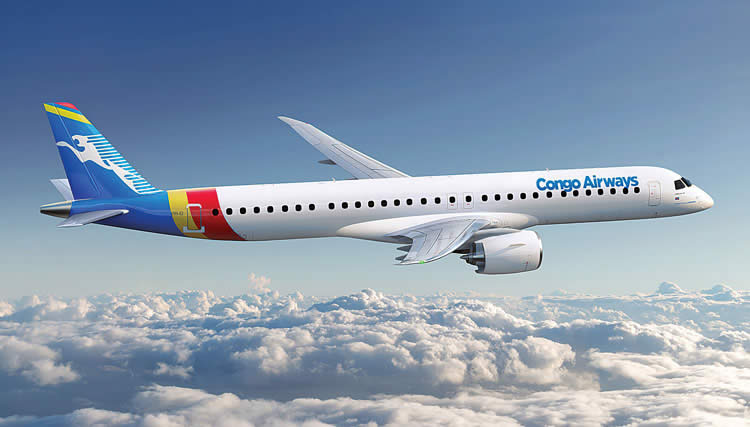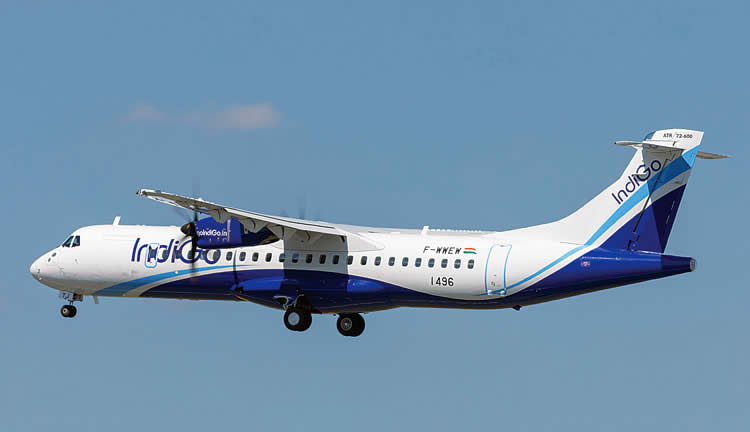INDIAN ARMED FORCES CHIEFS ON OUR RELENTLESS AND FOCUSED PUBLISHING EFFORTS

SP Guide Publications puts forth a well compiled articulation of issues, pursuits and accomplishments of the Indian Army, over the years

"Over the past 60 years, the growth of SP Guide Publications has mirrored the rising stature of Indian Navy. Its well-researched and informative magazines on Defence and Aerospace sector have served to shape an educated opinion of our military personnel, policy makers and the public alike. I wish SP's Publication team continued success, fair winds and following seas in all future endeavour!"

Since, its inception in 1964, SP Guide Publications has consistently demonstrated commitment to high-quality journalism in the aerospace and defence sectors, earning a well-deserved reputation as Asia's largest media house in this domain. I wish SP Guide Publications continued success in its pursuit of excellence.
Embraer’s E2 Jets Score over Turboprops
The largest aircraft in the E-Jet E2 family, the E195-E2, has been designed and developed to maximise returns and provide appreciable levels of efficiency on high-density routes

The latest in the medium range jet airliner segment of the global airline industry to make a mark on the regional aviation scene is the Embraer E2 Jet family of regional airliners. Compared to a regular airliner that is operated by all the major airlines of the world, a regional airliner is smaller in size and is designed to fly up to 150 passengers on short haul flights serving as a feeder airline for the regular airlines that operate large carriers. This class of airliners is typically flown by the regional airlines that are either independent entities or are subsidiaries of the larger airlines. Regional airliners are used for short trips between smaller towns or from a larger city to a smaller city
EMBRAER E2 JET FAMILY
A number of platforms in the E2 Jet family have been designed and developed by the renowned Brazilian aerospace major Embraer. Founded in 1969, Embraer is the third largest producer of civil aircraft after Boeing of the United States and the European multinational aerospace corporation, Airbus. Coming after the highly successful E-Jet family of airliners that made a mark in the regional aviation segment on the global scene, the programme to develop the E2 Jet family of regional airliners was formally launched at the Paris Air Show in the year 2013. The first platform of the E2 Jet family that undertook its maiden flight on May 23, 2016 was the E190-E2. Thereafter, the platform received its certification at the end of February 2018 nearly two years later and its entry into service took place on April 24 the same year.

The Embraer E2 Jet family that has evolved from the Embraer Regional Jets, has several improvements over its predecessors. The areas in which the improvements are notable are the new wing design, engines with better fuel efficiency and advanced avionics. The Embraer E2 Jet family has three models as under:
- The E175-E2 is the smallest variant that has a capacity of accommodating up to 90 passengers. The airliner has a flight range of 3,704 kilometres.
- The E190-E2 has a capacity to carry up to 114 passengers which the same as its predecessor, the E190, and is also of the same size. The airliner has a flight range of 5,278 kilometres
- The E195-E2 is the largest aircraft in this series offered by Embraer. It has a capacity to carry up to 146 passengers and has a flight range of 4,815 kilometres.
Despite the growth in the fleets of regional airliners powered by jet engines, this segment of the industry continues to face significant competition from the regional airliners powered by turboprop engines
The largest aircraft in the E-Jet E2 family, the E195-E2, has been designed and developed to maximise returns and provide appreciable levels of efficiency on high-density routes.
REGIONAL AVIATION
Initially, the regional aviation segment was patronised by aircraft powered by piston engines. However, these were soon replaced by aircraft powered by turboprop engines. Compared with the piston engine aircraft, the turboprop powered airliners provided distinctly higher level of reliability with the same or even better level of economy in operations. As turbofan engines provided improved level of efficiency, airliners powered by jet engines having a capacity similar to the regional aircraft powered by turboprop engines, narrowed the gap in operating economy. This is what has led to the regional airliners powered by jet engines emerging as preferred option as these provide better comfort, higher speed and better aircraft utilisation rate. This is what has fuelled the growth in the number of regional airliners powered by jet engines. The market for regional airliners powered by jet engines is moving towards the larger 100 to 150 seat airplanes such as the second generation Embraer E-Jets that is inclined to narrow the capacity and operating capabilities between regional and mainline carriers.
JET VERSUS TURBOPROP ENGINES
Despite the growth in the fleets of regional airliners powered by jet engines, this segment of the industry continues to face significant competition from the well established regional airliners powered by turboprop engines. However, there are a number of advantages that an airliner powered by jet engines such as the more advanced Embraer E2 Jet family of regional airliners have to offer provides, over airliners powered by turboprop engines. In the case of the Embraer E195-E2 for example, with its highaspect ratio wings and swept wing tips combined with several other improvements in aerodynamics, this platform achieves double digit lower fuel consumption compared to current-generation E-Jets. Overall, the Embraer E2 Jet offers maintenance cost that is lower when compared to that offered by its competing platforms in the domain of aircraft powered by turboprop engines.

An airliner such as the Embraer E2 Jet powered by jet engines can climb to higher altitudes as compared to an airliner of similar capacity powered by turboprop engines. This enables the jet powered airliner such as the Embraer E2 Jet to climb to altitudes where its operations will not be adversely affected by bad weather. Apart from evading the adverse impact of bad weather on its capability to undertake assigned tasks, capability of the Embraer E2 Jet to climb to higher altitudes as compared to airliners powered by turboprop engines, also provides it the advantage of a significantly higher cruising speed when compared to a regional airliner powered by turboprop engines that has limitations of both the height it can climb to as well as cruising speed. As compared with a turboprop powered regional airliner, passengers travelling by the Embraer E2 Jet take less time to reach their destination. On long routes, as the time spent at cruising altitude is greater, the Embraer E2 Jet certainly proves to be more fuel efficient as compared to its competitors in the turboprop powered family of regional airliners.
The Embraer E195-E2 is very close to matching the performance as well as seating capacity of the well established players in the market
Another clear advantage that the Embraer E2 Jet offers is the distinctly low level of noise and vibration as compared to regional aircraft powered by turboprop engines. This makes the Embraer E2 Jet far more comfortable for passengers as compared to the level of comfort offered by regional airliners powered by turboprop engines.
COMPETING AIRLINERS
Entry of the Embraer E2 series especially the E195-E2 in the global regional aviation market has triggered a competition with airliners that were commissioned into service by the well established aerospace majors such as the Airbus and the Boeing and have been in service for quite some time. Embraer E195-E2 has to made inroads into the domain of the existing platforms from Boeing and Airbus. Embraer E195-E2 is very close to matching the performance as well as seating capacity of the well established players in the market. What is an important factor for airline operators is that the cost of acquisition as well as operation of the E2 series of jetliners from Embraer are estimated to be at least 20 per cent lower as compared to that of platforms from Airbus and Boeing. Also, operating cost of these platforms from Embraer powered by jet engines, are lower than airliners powered by turboprop engines.





